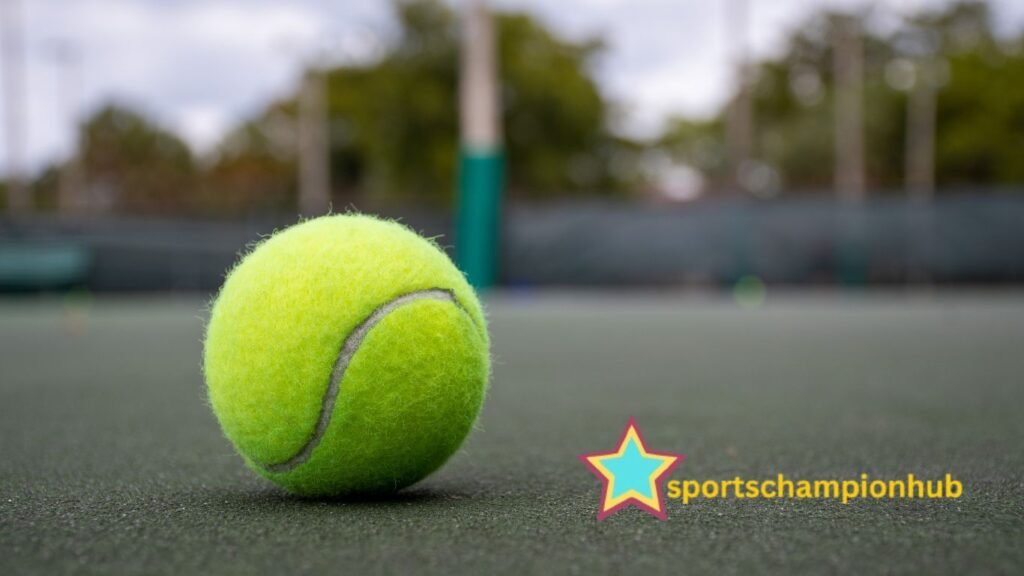
Tennis Ball
Tennis balls play a crucial role in maintaining the quality of your game. Understanding how to properly care for your tennis balls not only helps keep your performance at its peak but also extends the lifespan of the balls, saving you money in the long run. In this guide, we’ll walk you through the essential aspects of tennis ball care, providing you with expert tips on keeping your game sharp while maximizing the value of your equipment.
Why Tennis Ball Care Matters
Tennis balls lose their bounce and grip over time due to wear and tear. When exposed to moisture, extreme temperatures, or improper storage, the pressure inside the balls can decline rapidly, resulting in a loss of quality. By following the right tennis ball care practices, you can keep them in optimal condition, which translates into better control, accuracy, and consistency during play.
1. Proper Storage to Extend the Life of Your Tennis Balls
Store Tennis Balls in a Cool, Dry Place
To maintain the quality of your tennis balls, it is important to store them in a cool, dry environment. High temperatures can cause the internal air pressure to expand, making the balls lose their bounce faster.
Use Pressurized Tennis Ball Containers
Pressurized tennis ball containers can significantly extend the lifespan of your tennis balls. These containers help maintain the internal pressure of the balls, preserving their bounce. Consider using a pressurized storage tube specifically designed to store tennis balls at their optimal pressure.

Avoid Leaving Tennis Balls in the Car
Leaving tennis balls in your car exposes them to temperature fluctuations, which can harm the internal pressure. Cars can get extremely hot during the summer or freezing cold during winter, both of which can negatively impact your tennis balls.
2. Regular Maintenance to Preserve Bounce and Durability
Clean Your Tennis Balls
Tennis balls can pick up dirt, dust, and debris from the court, which can deteriorate the felt over time. Cleaning your tennis balls regularly can help maintain the quality of the felt and keep your balls in top playing condition. To clean your tennis balls, follow these steps:
Use a soft brush to gently remove loose dirt.
Wipe the balls with a damp cloth if necessary, then allow them to air dry.
Rotate Your Tennis Balls During Play
Rotating your tennis balls during play helps to distribute the wear evenly, reducing the rate at which they lose their bounce. Switch balls regularly during a game to ensure that all the balls get equal usage.

Avoid Using Worn-Out Balls
Using worn-out tennis balls can affect the quality of your game and may even result in injuries. As a general rule, replace tennis balls once you notice significant wear on the felt or a noticeable drop in bounce. Pay attention to how the ball reacts when you hit it; if it no longer has the same responsiveness, it’s time for a replacement.
3. Factors That Accelerate Tennis Ball Wear
Surface Type Matters
The type of court you play on can significantly impact the longevity of your tennis balls. Hard courts tend to wear down the felt much faster compared to clay or grass courts. If you frequently play on hard surfaces, you may need to replace your tennis balls more often.
Frequent Use and Intense Training Sessions
Frequent play or intense training can accelerate wear and tear on tennis balls. If you engage in multiple practice sessions per week or participate in tournaments, it is advisable to have a fresh set of tennis balls on hand for official matches while using older balls for practice.
Weather Conditions
The weather can have a significant effect on the performance and lifespan of your tennis balls. Hot weather can cause the internal pressure of the ball to expand, leading to faster wear, while cold weather can make the ball feel less bouncy and harder to control.
4. Reconditioning and Reusing Tennis Balls
Repressurize Your Tennis Balls
Repressurizing tennis balls is an effective way to restore lost bounce and extend their usability. This can be done using a tennis ball repressurizer, a device that restores internal pressure by sealing the balls inside a pressurized chamber. This process can breathe new life into balls that have lost some of their original bounce.
Use Older Balls for Non-Competitive Play
When your tennis balls start to show signs of wear, set them aside for practice sessions, casual games, or drills. While they may not be suitable for competitive play, older balls can still be used to practice various shots or warm-ups. This way, you get the most out of each set before completely retiring them.

Donate or Repurpose Old Tennis Balls
Old tennis balls can still serve a purpose even after they’ve lost their bounce. Donating them to schools, animal shelters, or nursing homes is a great way to give them a second life. They can also be used for various household purposes, such as protecting floors from furniture scratches or adding cushioning to chair legs.
5. Choosing the Right Tennis Balls for Longevity
Opt for Pressurized vs. Pressureless Balls
When choosing tennis balls, it’s important to understand the difference between pressurized and pressureless tennis balls. Pressurized balls are filled with air or gas, offering a livelier bounce but losing pressure over time. Pressureless balls, on the other hand, have a firmer rubber core and retain their bounce for much longer. While they may not provide the same level of performance as pressurized balls, they are ideal for practice and can help you save money.
Select High-Quality Balls
Investing in high-quality tennis balls can make a noticeable difference in their durability. Look for reputable brands known for producing premium-grade tennis balls with reinforced felt. While they may be more expensive initially, they will last longer, reducing the need for frequent replacements.







